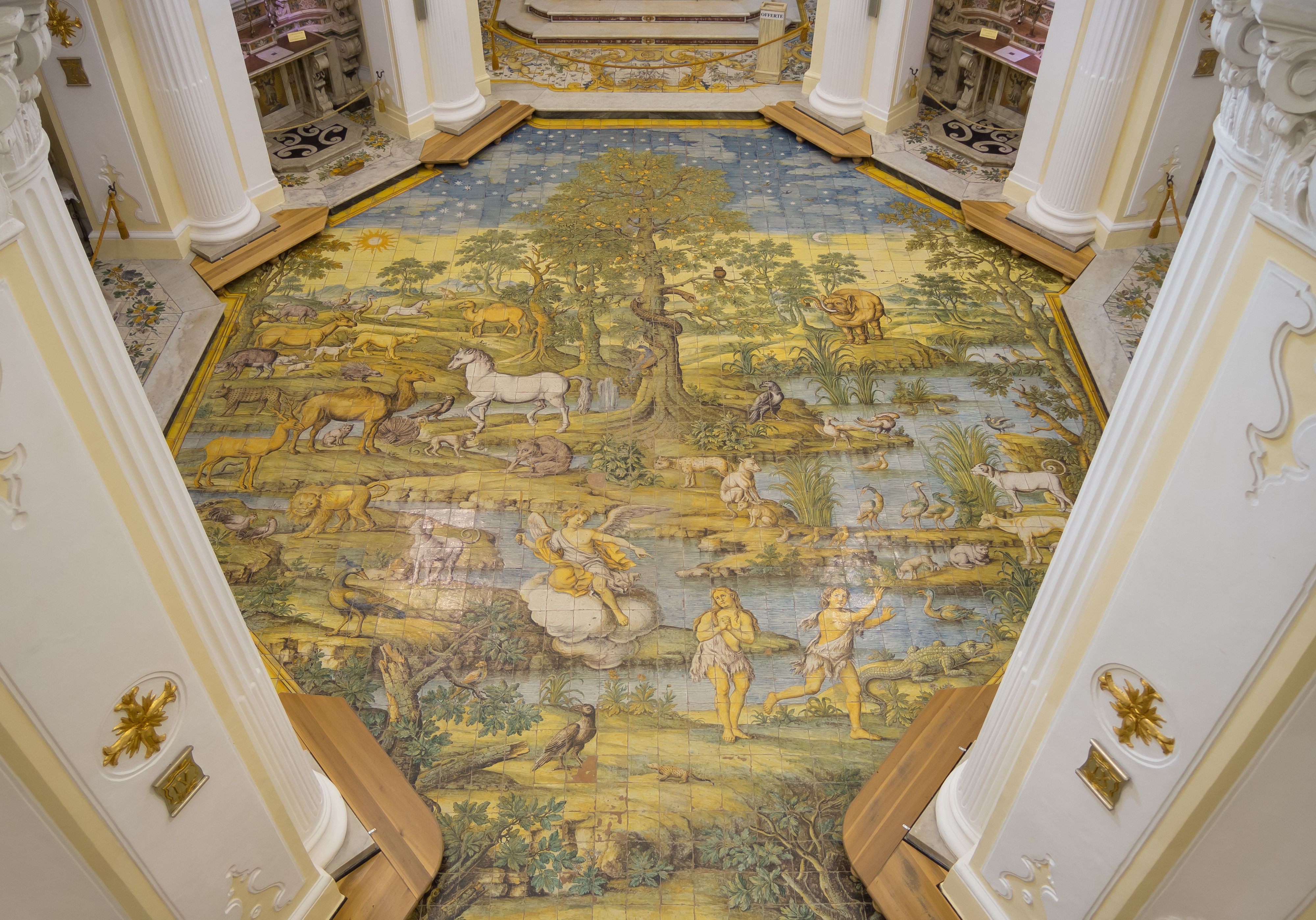From Siena to Venice, beauty is sometimes at our feet.
Lenten Campaign 2025
This content is free of charge, as are all our articles.
Support us with a donation that is tax-deductible and enable us to continue to reach millions of readers.
From mosaics, to inlaid marble, to elaborately designed labyrinths, the floors of Italian churches are a treasure trove of artistic craftsmanship and beauty. Floor decoration techniques vary across the peninsula, from the marble floors of Tuscan churches to the mosaic ones of Venice. Here is a gallery of the most beautiful floors of Italian churches, to remind us that beauty is literally all around us.
1. Siena’s Cathedral
Art historian Giorgio Vasari famously called it the “largest and most magnificent floor ever made.” The floor of Siena’s Cathedral may, indeed, be the most important example of floor art in Italy. Entirely composed of marble tiles, it was completed between the 13th and 18th centuries. The finely decorated marble tiles make up 60 scenes from the Bible and local iconography, from Moses obtaining water from a rock on Mount Horeb to packs of wolves, a symbol of the city of Siena. Each of these stunning scenes was completed by Sienese artists, including the Renaissance master Pinturicchio, who completed the scene called “Mount of Wisdom.” These skilled artists spent hours making small engravings in white marble, which they then filled with black putty. Colored marble was later added, mimicking the technique of wood inlaying. The overall effect when looking at this stunning floor is to be walking on one of the greatest artworks of all time.

2. Anacapri’s Church of St. Michael the Archangel
Created by tile artist Lonardo Chianese after a drawing by painter Francesco Solimena, this mosaic floor represents the story of Adam and Eve in the Garden of Eden. It is considered one of the finest examples of majolica tile art, and for this reason visitors are not allowed to walk on it. Footbridges are located around the floor. The best way to appreciate the finely decorated colored marble tiles is by climbing the steps located at the entrance of the church. From here, viewers can clearly see the various characters that make up the floor decoration, from Adam and Eve to the Snake and the Tree of Good and Evil.

3. Santa Maria del Fiore, Florence
It took 150 years, a lot of marble blocks and many skilled craftsmen to create the gorgeous polychrome floor of Florence’s Santa Maria del Fiore. Oriented around a central octagonal shape, the floor was designed by Florentine master Simone del Pollaiolo and is a masterpiece of geometric symmetry and marble inlay. Colored marble blocks were transported from all around Tuscany and its surroundings: green marble from Prato, black marble from Colonnata and red marble from Monterantoli.

4. Santa Maria Della Salute, Venice
Erected in between 1631 and 1687 to celebrate God’s help in ending the plague that hit Venice, Santa Maria Della Salute is one Venice’s most beloved churches. The octagon-shaped floor is composed of thousands of colored marble tiles assembled in the way of a mosaic. The end result is a gorgeous, symmetric floor, at the center of which it’s possible to view all of the church’s altars. At the center of the floor stands a bronze plate that marks the spot where the Doge threw some coins to celebrate the inauguration of the church in 1631.

5. Basilica San Vitale, Ravenna
Known for its stunning beauty, which inspired poets and artists from Dante to Klimt, the Basilica of San Vitale contains one of the most original floor designs in Catholic architecture. The floor is composed as a circular labyrinth that spins off of a shell-shaped figure. Both the circular labyrinth and the shell are used as symbols for pilgrimage in Christian art. The labyrinth leads to a circular center, which symbolizes the end goal of pilgrimage — to have a deep connection with God.









